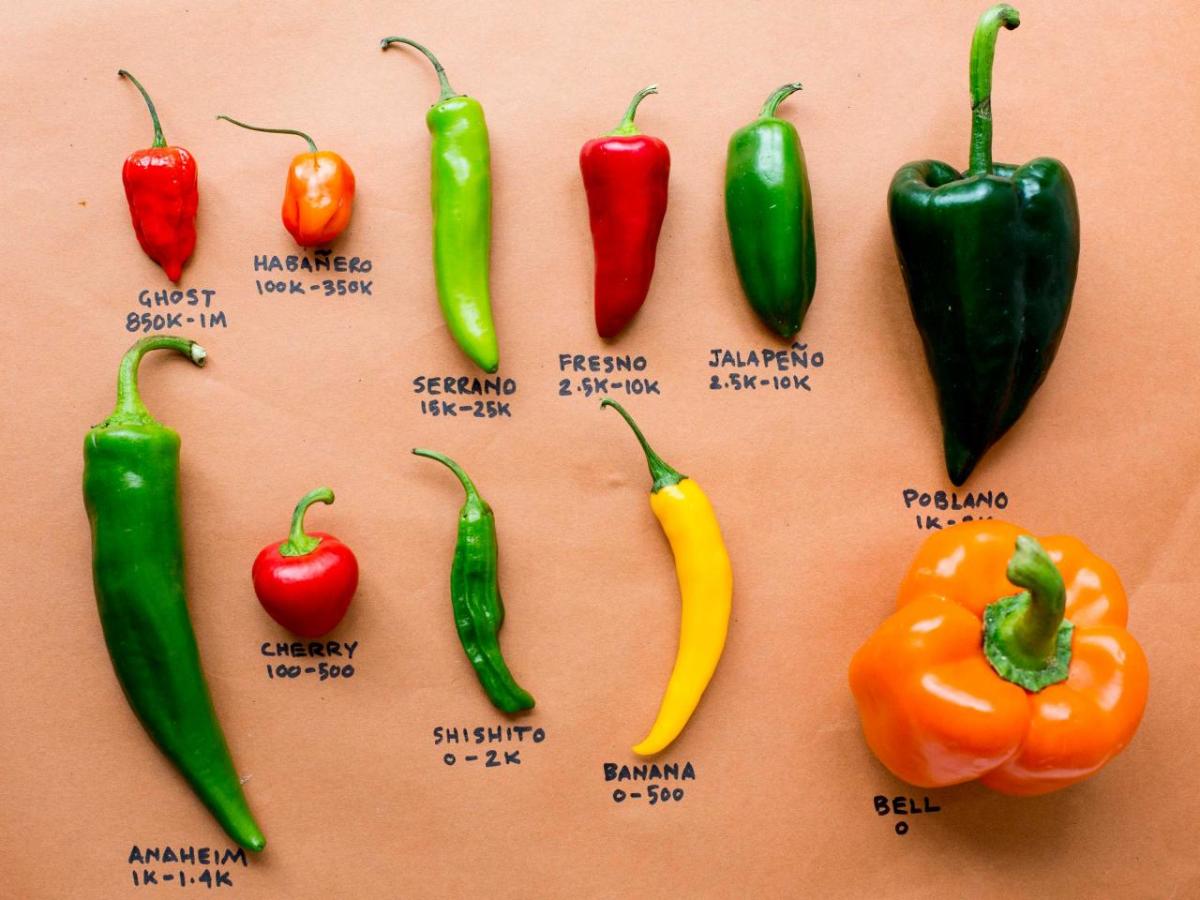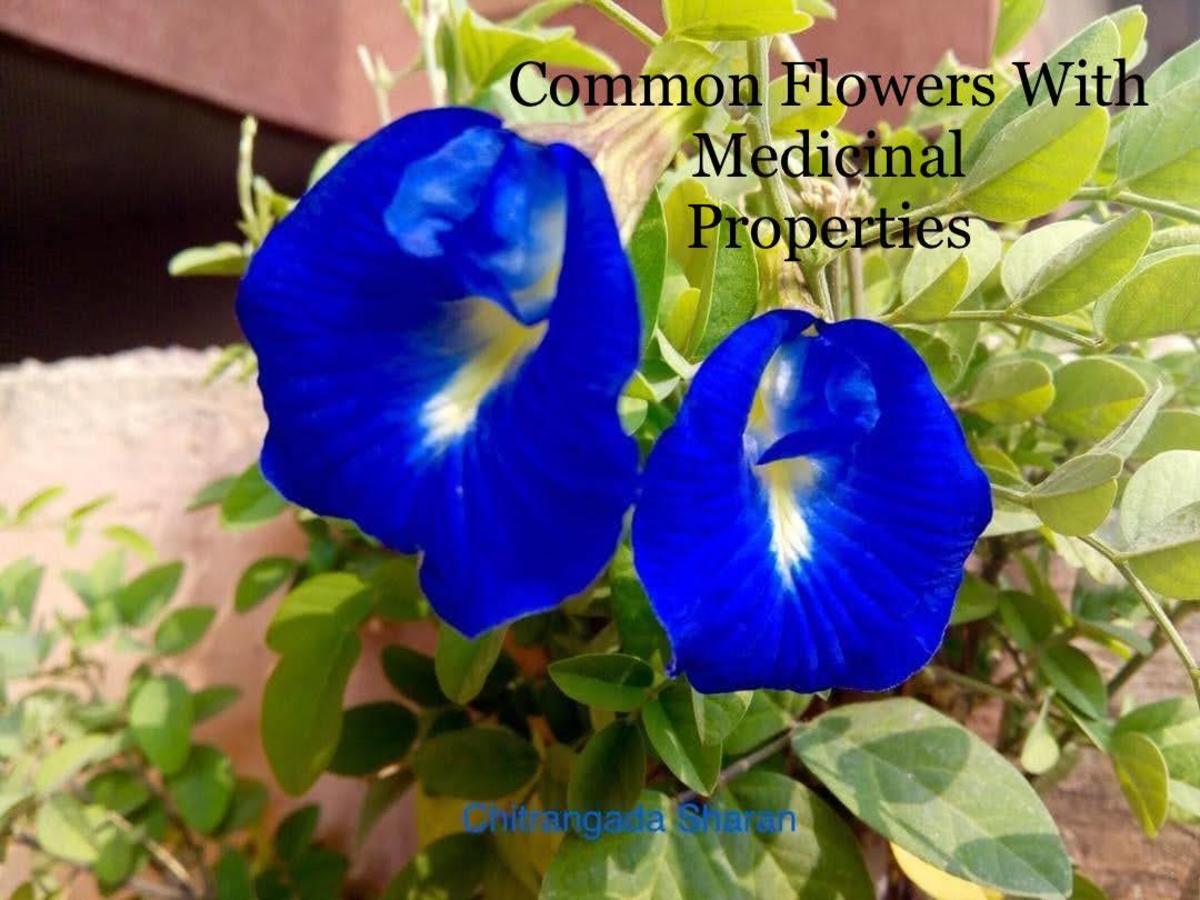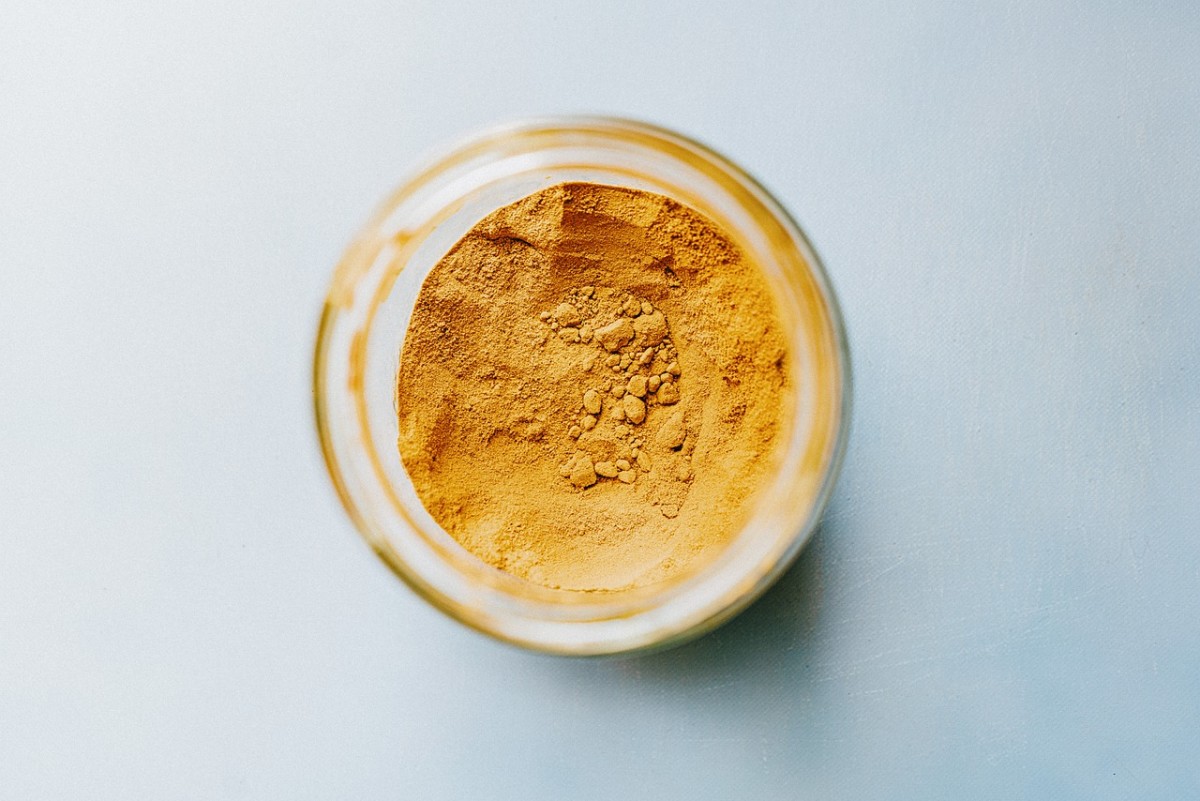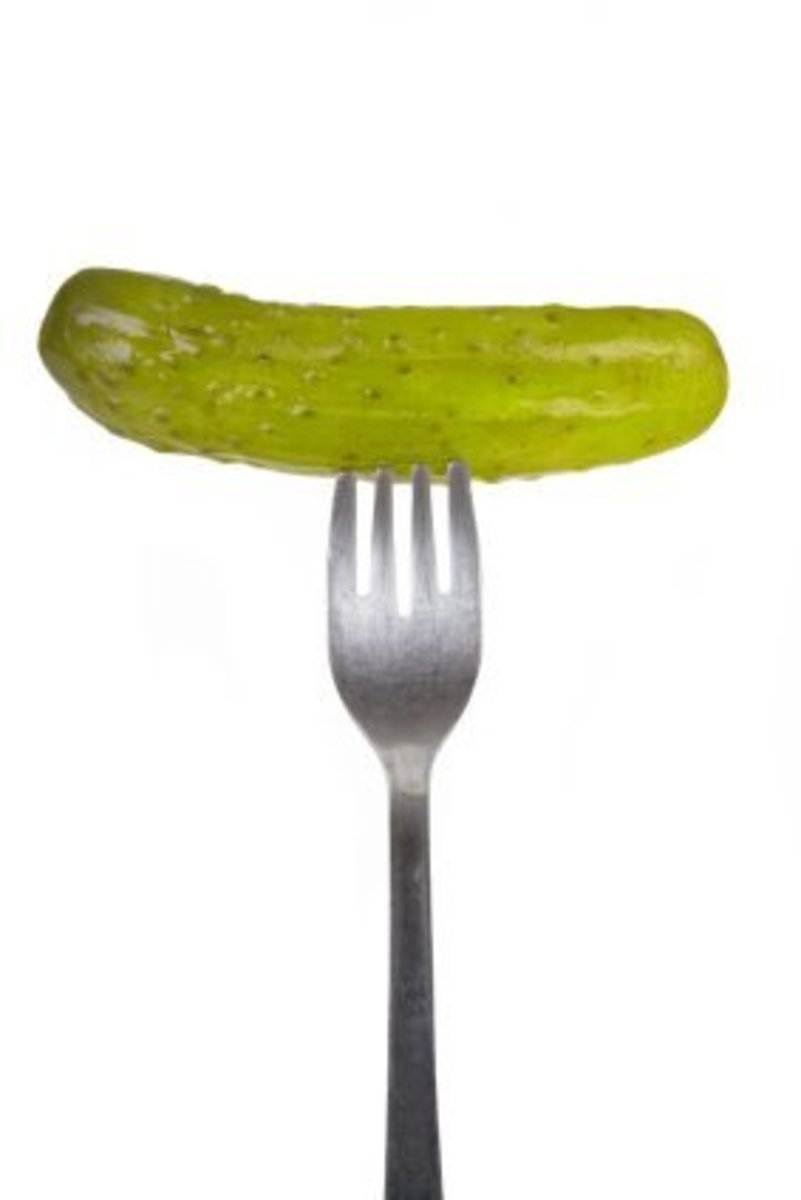Common Uses in Cooking and Medicinal Properties of Authentic Indian Spices
Aromatic spices are the secret to authentic Indian cooking. This article explores the unique flavors, common uses and medicinal properties of traditional Indian spices.
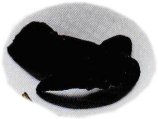
Traditional Indian Spices
Kokum* is made from the fruit of a native Indian tree. The rind is peeled, soaked in the fruit's juice and then sun-dried.
Common Uses in Cooking - So dark it is almost black, kokum lends a sour but fruity flavor to coconut-based dishes, vegetable dishes and even refreshing summer drinks.
Medicinal Properties - Kokum is sought after for its cooling properties and to help relieve skin allergies.
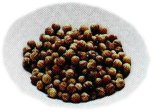
Coriander, a native of the Mediterranean, is used extensively throughout India - the dried seeds and ground seeds as a spice and the fresh leaves as a herb. Coriander's ability to enhance other spices makes it the perfect base for spice blends.
It has a fresh flavor with a hint of orange and is used in most savory Indian dishes and some drinks, as well as being a standard ingredient in garam masala, a spice mix.
Medicinally, coriander is a digestive aid and is thought to have diuretic properties.
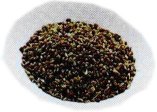
Ajowan seeds*, also known as ajwain, are related to dill, cumin, parsley and caraway. They taste similar to cumin, with a touch of thyme and a peppery zing. In fact, ajowan seeds contain even more thymol (the volatile oil that gives thyme its characteristic flavor) than thyme itself.
Common Uses - Ajowan seeds are used whole, and are often added to bread or vegetarian and lentil dishes.
Medicinal Properties - They are believed to aid digestion.
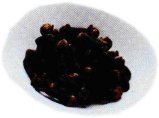
Cloves are dried, closed flower buds from a tropical tree that is native to the Moluccas (a group of islands in Indonesia). They are sold either whole or ground - ensure ground cloves are not fibrous as this can indicate clove stems have been ground rather than the more flavorsome buds. Use cloves sparingly as their flavor is pungent, strong and, in excess, antiseptic.
Medicinal Properties - Cloves are believed to help soothe an irritable digestive system and dull a toothache.
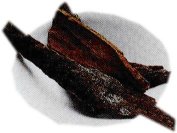
Cassia is often mistaken for cinnamon, however it is finer in texture than cinnamon when ground - almost like talcum powder. The bark of the tree is usually peeled, flattened, then dried. Highly fragrant, cassia is sold as pieces or ground - it's best to buy ground cassia rather than grinding your own as it is quite hard.
Common Uses - Like cinnamon, cassia can be used in light curries, vegetable and rice dishes, and sweet dishes. Too much cassia gives a pungent sharpness.
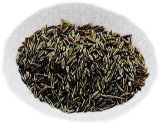
Cumin is native to the Mediterranean but is now a vital ingredient in Indian cooking. Available as whole seeds or ground, cumin is used in vegetable, fish, grain and legume dishes, as well as many spice blends for curries. To help release their flavor, the seeds are usually lightly dry-roasted before using.
Medicinal Properties - Cumin has anti-flatulence properties and is thought to soothe colds and flu when added to a tea blend.
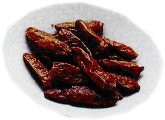
Chillies are used prolifically in Indian dishes, and both fresh and dried chillies are used when making spice blends. Ironically, the chilli is native to South America and only made its way to India about four centuries ago. (Hot dishes were created using pepper and mustard seeds before this). These days, chilli is a vital part of Indian cuisine even though only a handful of varieties are cultivated in India. When using chillies, remember the golden rules: wear rubber gloves when preparing fresh chillies; the smaller chillies are usually hottest; and yoghurt-based accompaniments are a great way to cool the palate after a hot curry.
Medicinal Properties - Chilli can be therapeutic for joint inflammation and respiratory disorders.
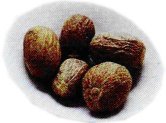
Nutmeg is the seed kernel from the fleshy fruit of an evergreen tree native to the Moluccas. Once the seed covering, called mace, is removed, the seed is dried and cracked open to reveal the kernel (whole nutmeg, pictured).
Common Uses - The kernel is finely grated or ground and used in savory and sweet dishes - milk-based desserts and sweets in particular. Its flavor is sweeter than mace and more fragrant.
Medicinal Properties - Nutmeg may help digestive disorders, insomnia and rheumatism.
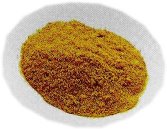
Turmeric is the boldly colored flesh of a rhizome related to ginger, and has a pungent, slightly bitter, musky flavor. Some recipes call for grated fresh turmeric but the ground dried version is more commonly used. Sometimes called "the heart and soul of curry", turmeric is the base of many curry blends and is mostly used in savory Indian dishes to enhance and balance other spice flavors. Turmeric is also used as a fabric dye and will stain clothes, fingers and utensils.
Medicinally, it is thought to purify the blood, soothe sinuses and cleanse the skin.
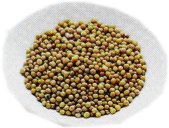
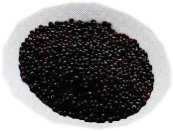
Mustard seeds come from an annual herb and have been used since the earliest recorded history. In India, yellow and brown mustard seeds are commonly used. Yellow mustard seeds (also known as white) are native to southern Europe, while brown mustard seeds (also known as black) are native to India. The raw seeds have little aroma but, once cooked, they develop a definite earthy scent and slightly bitter, nutty flavor.
Common Uses - In Indian cuisine, the seeds are used in spice blends, curries, vegetable dishes and marinades.
Mustard seeds are also thought to ward off evil.
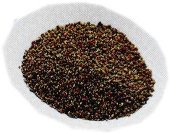
Celery seeds* are tiny and lightweight. They have a slightly bitter flavor with a fragrant hint of cumin and are added whole to tomato-based curries or sprinkled over bread before baking.
Medicinally, they are believed to be a tonic for asthma and are also known for their ability to reduce arthritis.
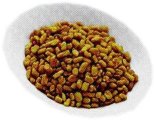
Fenugreek seeds* are often used in savory dishes and impart a sharp flavor. The seeds are usually slowly roasted or lightly fried before they are used to bring out their flavor. Sometimes, they are soaked in vinegar to help soften them before using.
Common Uses - Fenugreek seeds are an important ingredient in curry powder and are also added to bread, chutneys and legume dishes. The leaves, fresh as well as dried, are also used in savory dishes.
Medicinal Properties - Fenugreek helps to reduce flatulence and promote lactation.
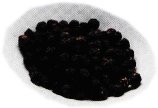
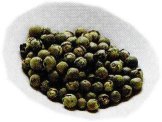
Pepper, native to the Malabar Coast of India, is the world's most sought-after spice. The green spikes of pepper berries are picked when they begin to turn red. They are then spread over mats and left out in the sun to dry. During this process, an enzyme in the outer layer turns the peppercorns black, increasing the volatile oils that give black peppercorns their hot, pungent flavor. Green peppercorns are either pickled or freeze-dried immediately after picking to preserve their color and fresh, aromatic flavor.
Common Uses - Both varieties are used extensively throughout India, in all types of savory dishes. Black pepper is sometimes added to herbal tea and masala chai, a popular Indian tea.
Medicinal Properties -Pepper is useful in treating flatulence and colds, and is a stimulant and digestive aid.
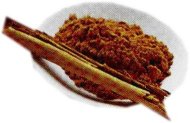
Cinnamon is native to Sri Lanka and is the dried inner bark of a variety of laurel tree. Available as dried quills (cinnamon sticks) or ground (both pictured), cinnamon is used in savory and sweet dishes (remove the quills before serving). Masala chai (Indian tea) would not be the same without its fragrant presence combined with cardamom. Cinnamon quills are soft enough to grind at home and may give a better flavor than bought ground cinnamon.
A tea made from cinnamon is therapeutic for colds, nausea and the digestive system.
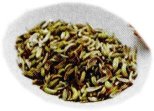
Fennel seeds are native to southern Europe and Asia Minor. The seeds have a warm aniseed flavor and are used whole or ground in savory and sweet Indian dishes.
They are also candied or sugar coated, and served after meals to freshen the breath, cleanse the palate and aid digestion.
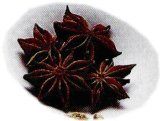
Star anise*, the dried fruit of a tree native to southern China and Vietnam, gives a pungent, licorice flavor that is stronger than aniseed and fennel.
Usually sold (and used) in pieces or whole, star anise is used in rice dishes called biryani, meat curries and chicken dishes (remove the star anise before serving).
Star anise helps digestion, soothes coughs and is used in antiseptics. A component of star anise oil is used to flavor confectionary, chewing gum, liqueurs and medicines.
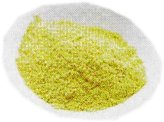
Asafoetida* comes from the resinous sap of a large variety of fennel. The resin is dried and then ground to make a yellow powder. As the name implies, the aroma and flavor of raw asafoetida are quite fetid, so make sure you keep it in a well-sealed airtight container. However, when added sparingly to a cooked dish, it loses the smell and develops a tasty garlic-onion flavor.
It is popular in dishes with legumes as it helps prevent flatulence.

Cardamom, also known as green cardamom, is often called "the queen of spices" and, on smelling its heavenly sweet fragrance, you are left in no doubt as to why. The pods are picked just before they're ripe and are dried in drying houses. Choose those that are plump and lime-green in color. The brown seeds that are housed in the pods are used either whole or ground in savory and sweet Indian dishes. Cardamom is also one of the ingredients in the spice mix garam masala, and is useful as a breath freshener and tummy soother. For the best flavor, grind your own cardamom seeds as needed because the oils dissipate once the seeds are ground and stored. White cardamom is simply bleached green cardamom and is usually not as strongly flavored as the unbleached variety. Brown cardamom, also known as black cardamom, is a different variety of cardamom and gives a strong, smoky flavor to savory dishes.
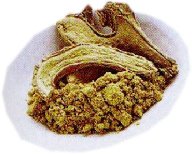
Ginger is used both fresh and dried. Dried ginger is available sliced or ground (both pictured).
Common Uses - Ginger has a sweet, woody flavor and adds a zing to meat and vegetable curries, chutneys, marinades and sweets.
It has been used medicinally in India since ancient times for conditions such as flatulence, sore throats, colds and gout.
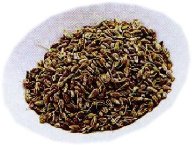
Aniseed* is also called anise. The seeds are used whole in dishes that are fairly liquid, such as curries, soups and saucy meat dishes. They are also candied or sugar coated, and served after meals to freshen the breath, cleanse the palate and aid digestion.
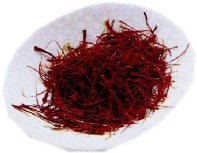
Saffron, the dried stigma of the crocus flower that is believed to be native to Kashmir in India, is the world's more expensive spice. There are three stigmas per flower, so it takes thousands of flowers to yield a small weight of saffron, plus the crop must be gently hand-picked to prevent damage. Saffron has a musky aroma and slightly bitter flavor, and in India it is used in both savory and sweet dishes. Along with its more mundane uses, like relieving digestive and urinary disorders, saffron is said to act as an aphrodisiac.
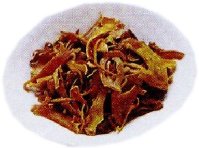
Mace* is the mesh-like red covering that surrounds nutmeg. The mace is carefully removed from the nutmeg in one piece and dried, whereupon it turns orange.
Common Uses - This fragrant spice is used whole (blade mace) or ground, in both savory and sweet dishes. It adds a clean, bitter flavor that is stronger than nutmeg - nutmeg is not a substitute.
Medicinal Properties - Mace is thought to relieve rheumatism.
* Available from Indian or Asian food shops and specialty spice shops.
Spice Selection
To ensure freshness and quality, always buy spices from a shop with a high turnover. The spices should have good color and aroma. Buying a smalll amount at a time will also ensure freshness. For the best flavor, buy dried spices whole (except for ginger, cassia and turmeric) and grind them as needed.
Spice Storage
Dried spices should always be stored in airtight jars or good-quality, zip-lock sealed packets. Keep them away from direct sunlight and any heat from the oven, as light and heat cause them to deteriorate rapidly, losing flavor and color. The best place to keep dried spices is in a cool cupboard. As a general rule, whole dried spices can be stored for 2-3 years and ground dried spices for 12-15 months, under ideal conditions.

